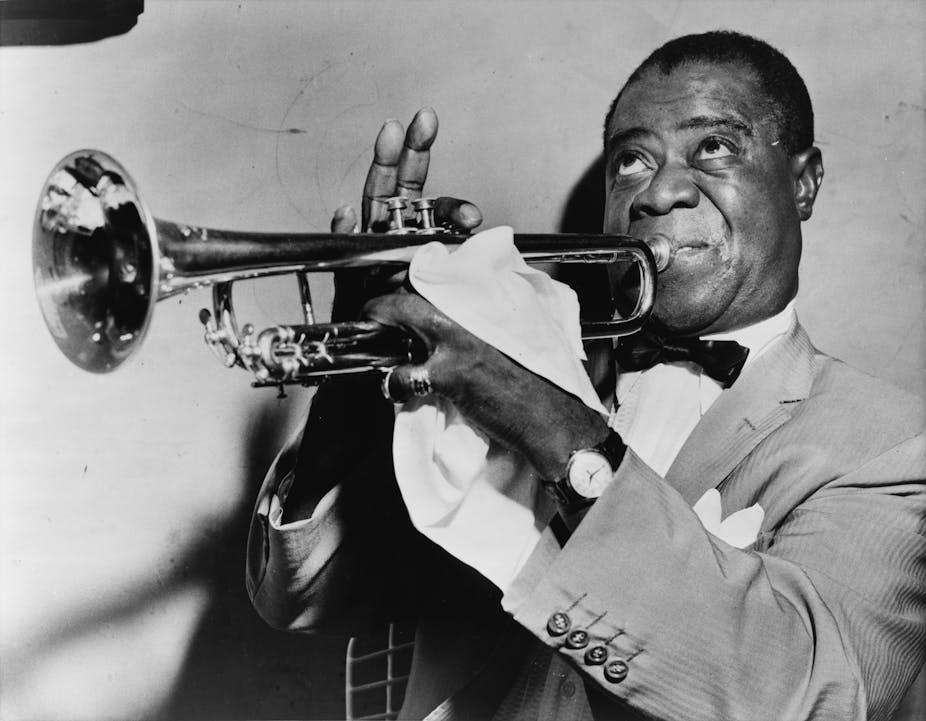Jazz is filling the radio waves and culture sections in honour of International Jazz Day. The day is organised by UNESCO, who say that the event, first run in 2012, is designed to celebrate the music for its promotion of “peace, dialogue among cultures, diversity, and respect for human rights and human dignity”. Quite right: over more than a century, jazz’s players, listeners and promoters have done all those things.
But they have also done the exact opposite. Jazz has been a loudspeaker through which governments have asserted ideology and exerted power. It has been made by splinter groups formed specifically to exclude people, whether on grounds of race, taste or squareness. It has been charged with an outrageous political radicalism, important precisely because it lacked “respect”.
UNESCO’s warm-milk platitudes are hardly objectionable. But that’s the point. In soothing away the rough-and-tumble of jazz’s past, that language seems not just to recognise the music, but also to help render it rather, well, lame.
A political tool
Government agencies have long clothed jazz in the rhetoric of universal peace and understanding, put cash in its pocket, and sent it out into the world. From the 1950s and the early years of the Cold War, Louis Armstrong, Dizzy Gillespie and Duke Ellington were dispatched to potential communist hotspots by a US state department seeking to win hearts and minds.
At the same time, the Voice of America radio station was broadcasting behind the Iron Curtain, engaging intrepid listeners with inspiring jazz and messages of democracy. Yet while black musicians were heard trumpeting American freedom abroad, they suffered discrimination and bigotry at home.
Sixty years later, jazz is not the popular form it once was. Instead, it’s often referred to as “America’s classical music”. And despite its systematic underfunding, the concert hall and conservatoire status it now enjoys only renders it riper for assimilation into the grand American narrative.
Wynton Marsalis, a brilliant, vocal trumpeter who is by far the most visible jazz personality alive, has often talked about the music as a model of American democracy: the bass player contributes this, the pianist contributes that, and everyone gives in their own way to the greater good.
Why not? This music describes America’s melting pot ideal better than anything. Many people know how African American blues players and classically trained Creole musicians, often working with Euro-American popular songs, ended up making what we think of as jazz in the early 20th-century. The same is true internationally, as Django Reinhardt’s effortless mix of French, Romani and US styles attests.
That reputation means the music is often pressed into service by arts institutions which – trying hard to be more representative, and to promote the same diversity hymned by UNESCO – endlessly manufacture awkward musical hybrids. These projects may tick funding bodies’ boxes, but they can reinforce as well as challenge social barriers.
Take Jason Yarde, perhaps the best young British jazz saxophonist today. His superb musicianship and creative openness mean that when one of these shotgun weddings is announced, he’s often soon called upon to act as marriage counsellor. Yarde is the on-stage go-between when the BBC Concert Orchestra does a project with grime MCs; he is the arranger and soloist when the Proms dabble in a little light jazz.
Yarde is not a patsy or a sell-out, and I’m sure he makes the music he wants with the resources he can get. Nevertheless, those kinds of hybrids can help bolster “officially” favoured forms and the cultural values associated with them. They make small concessions to difference (the jazz player, the grime MCs) while concentrating money and power in the same place as always (the orchestra). When jazz is called upon as multicultural peacemaker now, it plays the same role it did during the Cold War.
This is not to argue that “real” jazz is outsider jazz, or that musicians like Yarde aren’t due the kinds of support routinely offered to classical musicians. They are. But when such help is forthcoming, it’s not always on jazz’s terms.
And when jazz has made its own stand for those UNESCO values of dialogue, peace and freedom, it hasn’t always been celebrated – in fact, it’s often been suppressed. Bassist and composer Charles Mingus found that out when his record label made him remove the lyrics from an anti-segregation song at the height of the civil rights movement. Real social challenges are dangerous and unpleasant.
That’s true whatever direction they come from. More recently, saxophonist Charles Gayle faced a furious backlash when he began to opine on the “sins” of abortion and homosexuality during his sets.
I find Gayle’s views abhorrent, but I think his music is tremendous. To me his case shows that no matter how good the playing, jazz isn’t always on the right side of the argument, or about tolerance and dialogue. But it’s when it shocks that – for better or worse – it can matter most.
Look at the list of great musicians from around the world playing gigs on International Jazz Day, and it’s hard to begrudge them – or those liberal values, so often honoured only in the breach – the boost they’ll get.
Still, I worry that jazz’s new “protected” status, well described by UNESCO’s celebratory programme, is more an indication of the music’s contemporary frailty, than of its historic strength.

